Vinod Muthusamy
FLOW-BENCH: Towards Conversational Generation of Enterprise Workflows
May 16, 2025Abstract:Business process automation (BPA) that leverages Large Language Models (LLMs) to convert natural language (NL) instructions into structured business process artifacts is becoming a hot research topic. This paper makes two technical contributions -- (i) FLOW-BENCH, a high quality dataset of paired natural language instructions and structured business process definitions to evaluate NL-based BPA tools, and support bourgeoning research in this area, and (ii) FLOW-GEN, our approach to utilize LLMs to translate natural language into an intermediate representation with Python syntax that facilitates final conversion into widely adopted business process definition languages, such as BPMN and DMN. We bootstrap FLOW-BENCH by demonstrating how it can be used to evaluate the components of FLOW-GEN across eight LLMs of varying sizes. We hope that FLOW-GEN and FLOW-BENCH catalyze further research in BPA making it more accessible to novice and expert users.
OptiSeq: Optimizing Example Ordering for In-Context Learning
Jan 25, 2025Abstract:Developers using LLMs in their applications and agents have provided plenty of anecdotal evidence that in-context-learning (ICL) is fragile. In addition to the quantity and quality of examples, we show that the order in which the in-context examples are listed in the prompt affects the output of the LLM and, consequently, their performance. In this paper, we present OptiSeq, which introduces a score based on log probabilities of LLM outputs to prune the universe of possible example orderings in few-shot ICL and recommend the best order(s) by distinguishing between correct and incorrect outputs resulting from different order permutations. Through a detailed empirical evaluation on multiple LLMs, datasets and prompts, we demonstrate that OptiSeq improves accuracy by 6 - 10.5 percentage points across multiple tasks.
API-BLEND: A Comprehensive Corpora for Training and Benchmarking API LLMs
Feb 23, 2024Abstract:There is a growing need for Large Language Models (LLMs) to effectively use tools and external Application Programming Interfaces (APIs) to plan and complete tasks. As such, there is tremendous interest in methods that can acquire sufficient quantities of train and test data that involve calls to tools / APIs. Two lines of research have emerged as the predominant strategies for addressing this challenge. The first has focused on synthetic data generation techniques, while the second has involved curating task-adjacent datasets which can be transformed into API / Tool-based tasks. In this paper, we focus on the task of identifying, curating, and transforming existing datasets and, in turn, introduce API-BLEND, a large corpora for training and systematic testing of tool-augmented LLMs. The datasets mimic real-world scenarios involving API-tasks such as API / tool detection, slot filling, and sequencing of the detected APIs. We demonstrate the utility of the API-BLEND dataset for both training and benchmarking purposes.
FedGen: Generalizable Federated Learning
Nov 03, 2022Abstract:Existing federated learning models that follow the standard risk minimization paradigm of machine learning often fail to generalize in the presence of spurious correlations in the training data. In many real-world distributed settings, spurious correlations exist due to biases and data sampling issues on distributed devices or clients that can erroneously influence models. Current generalization approaches are designed for centralized training and attempt to identify features that have an invariant causal relationship with the target, thereby reducing the effect of spurious features. However, such invariant risk minimization approaches rely on apriori knowledge of training data distributions which is hard to obtain in many applications. In this work, we present a generalizable federated learning framework called FedGen, which allows clients to identify and distinguish between spurious and invariant features in a collaborative manner without prior knowledge of training distributions. We evaluate our approach on real-world datasets from different domains and show that FedGen results in models that achieve significantly better generalization than current federated learning approaches.
A Case for Business Process-Specific Foundation Models
Oct 26, 2022Abstract:The inception of large language models has helped advance state-of-the-art performance on numerous natural language tasks. This has also opened the door for the development of foundation models for other domains and data modalities such as images, code, and music. In this paper, we argue that business process data representations have unique characteristics that warrant the development of a new class of foundation models to handle tasks like process mining, optimization, and decision making. These models should also tackle the unique challenges of applying AI to business processes which include data scarcity, multi-modal representations, domain specific terminology, and privacy concerns.
A No-Code Low-Code Paradigm for Authoring Business Automations Using Natural Language
Jul 15, 2022
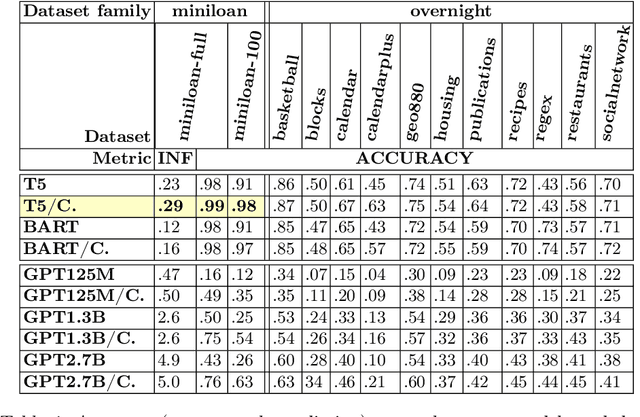

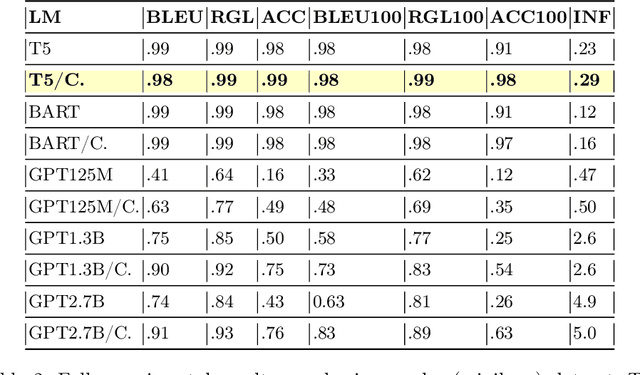
Abstract:Most business process automation is still developed using traditional automation technologies such as workflow engines. These systems provide domain specific languages that require both business knowledge and programming skills to effectively use. As such, business users often lack adequate programming skills to fully leverage these code oriented environments. We propose a paradigm for the construction of business automations using natural language. The approach applies a large language model to translate business rules and automations described in natural language, into a domain specific language interpretable by a business rule engine. We compare the performance of various language model configurations, across various target domains, and explore the use of constrained decoding to ensure syntactically correct generation of output.
Extending LIME for Business Process Automation
Aug 09, 2021
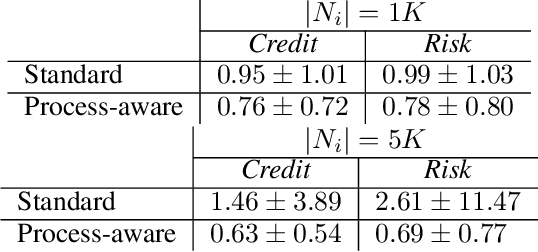

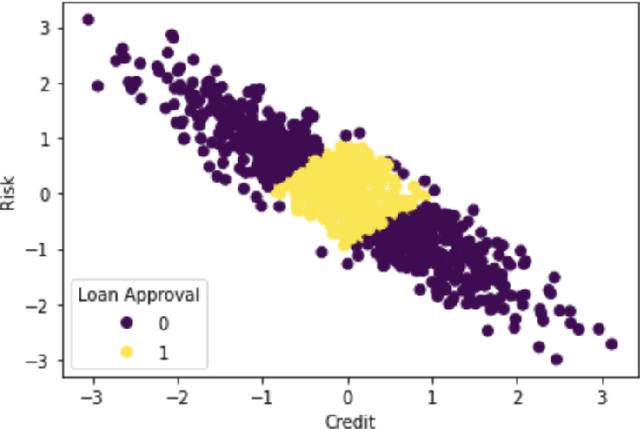
Abstract:AI business process applications automate high-stakes business decisions where there is an increasing demand to justify or explain the rationale behind algorithmic decisions. Business process applications have ordering or constraints on tasks and feature values that cause lightweight, model-agnostic, existing explanation methods like LIME to fail. In response, we propose a local explanation framework extending LIME for explaining AI business process applications. Empirical evaluation of our extension underscores the advantage of our approach in the business process setting.
Do's and Don'ts for Human and Digital Worker Integration
Oct 15, 2020Abstract:Robotic process automation (RPA) and its next evolutionary stage, intelligent process automation, promise to drive improvements in efficiencies and process outcomes. However, how can business leaders evaluate how to integrate intelligent automation into business processes? What is an appropriate division of labor between humans and machines? How should combined human-AI teams be evaluated? For RPA, often the human labor cost and the robotic labor cost are directly compared to make an automation decision. In this position paper, we argue for a broader view that incorporates the potential for multiple levels of autonomy and human involvement, as well as a wider range of metrics beyond productivity when integrating digital workers into a business process
From Robotic Process Automation to Intelligent Process Automation: Emerging Trends
Jul 27, 2020


Abstract:In this survey, we study how recent advances in machine intelligence are disrupting the world of business processes. Over the last decade, there has been steady progress towards the automation of business processes under the umbrella of ``robotic process automation'' (RPA). However, we are currently at an inflection point in this evolution, as a new paradigm called ``Intelligent Process Automation'' (IPA) emerges, bringing machine learning (ML) and artificial intelligence (AI) technologies to bear in order to improve business process outcomes. The purpose of this paper is to provide a survey of this emerging theme and identify key open research challenges at the intersection of AI and business processes. We hope that this emerging theme will spark engaging conversations at the RPA Forum.
A Conversational Digital Assistant for Intelligent Process Automation
Jul 27, 2020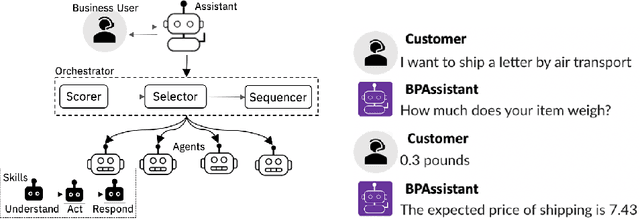


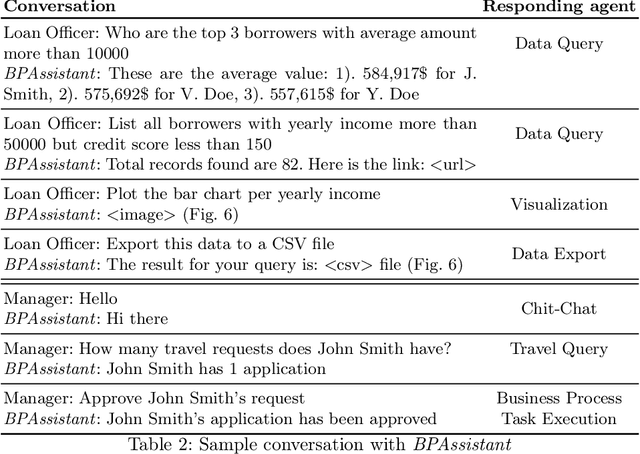
Abstract:Robotic process automation (RPA) has emerged as the leading approach to automate tasks in business processes. Moving away from back-end automation, RPA automated the mouse-click on user interfaces; this outside-in approach reduced the overhead of updating legacy software. However, its many shortcomings, namely its lack of accessibility to business users, have prevented its widespread adoption in highly regulated industries. In this work, we explore interactive automation in the form of a conversational digital assistant. It allows business users to interact with and customize their automation solutions through natural language. The framework, which creates such assistants, relies on a multi-agent orchestration model and conversational wrappers for autonomous agents including RPAs. We demonstrate the effectiveness of our proposed approach on a loan approval business process and a travel preapproval business process.
 Add to Chrome
Add to Chrome Add to Firefox
Add to Firefox Add to Edge
Add to Edge